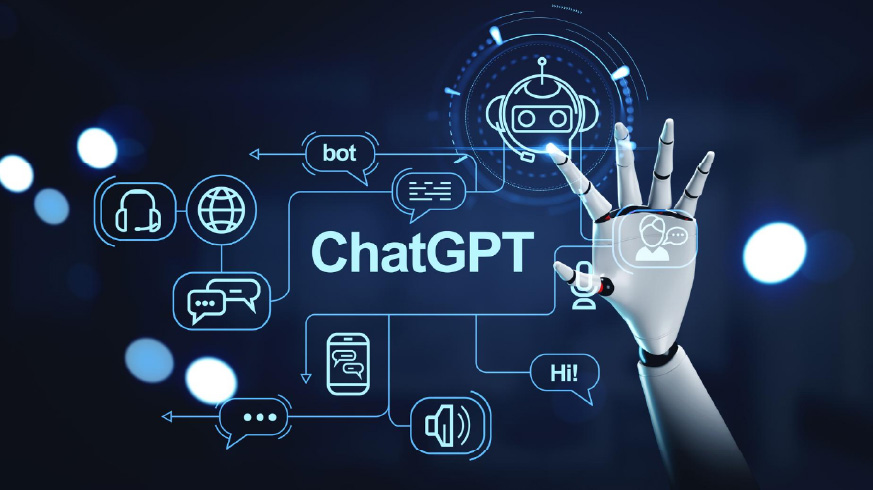Introduction
The forthcoming GPT-5 is layered in complete secret. OpenAI – the research lab behind its making – has kept its functions under wraps. The potential release of GPT-5, the next version of OpenAI’s LLM technology, has generated waves in the AI community. Although OpenAI has not yet confirmed any information about when it will be released or its features, there is widespread speculation over whether it could be a major step forward for the field. This article discusses some possible characteristics that GPT-5 may possess and its applications based on this; it also highlights its exciting potential while acknowledging that there are still many unresolved questions about how this model will ultimately mature.

The Speculative Capabilities of GPT-5
While details about GPT-5 remain under wraps, experts speculate it will possess significant advancements compared to its predecessor, GPT-3. A key focus area might be enhanced reasoning abilities. Imagine GPT-5 not just generating text, but also outlining the reasoning steps behind its conclusions. This could involve the model laying out a logical path for solving problems, with in-built mechanisms to verify the accuracy of each step. Such capabilities would make GPT-5 a more reliable and trustworthy tool for complex tasks.
Another area of speculation is increased efficiency. GPT-5 might be able to process information and complete tasks at a much faster rate than previous models. This improved processing speed could translate to real-time applications and enhanced performance across various domains. Additionally, advancements in areas like multilingual support could allow GPT-5 to seamlessly communicate and translate languages, fostering greater global collaboration.
It’s important to remember that these capabilities are speculative. OpenAI hasn’t officially confirmed any details about GPT-5. However, based on past advancements and industry trends, these potential features offer a glimpse into the exciting possibilities GPT-5 might hold.
OpenAI’s Journey
OpenAI has made significant strides in artificial intelligence research, particularly in the realm of large language models (LLMs). Their journey with GPT models began in 2018 with the introduction of GPT-1, a generative pre-trained transformer model. This model, along with its successors, GPT-2, GPT-3, GPT-4, and Sora have revolutionized the AI industry.
Here’s a closer look at OpenAI’s advancements with each GPT iteration:
GPT-1 (2018)
This pioneering model laid the foundation for future advancements. It demonstrated the potential of pre-trained transformers for various NLP tasks.
GPT-2 (2019)
Building on GPT-1’s success, GPT-2 showcased significant improvements in text generation quality and natural language understanding.
GPT-3 (2020)
This game-changer marked a substantial leap forward. With 175 billion parameters, dwarfing GPT-2’s size, GPT-3 offered exceptional capabilities in text generation, translation, question answering, and more. It could even perform tasks it wasn’t explicitly trained for, making it a versatile and powerful tool.
GPT-3.5 (August 2023)
Following the groundbreaking capabilities of GPT-3, OpenAI released GPT-3.5 in August 2023. This update focused on addressing some limitations of GPT-3 while offering new functionalities.
GPT-4(March 2023)
The latest iteration, shrouded in secrecy, is believed to possess further enhancements in areas like parameter size, reduced bias, factual accuracy, and even new features for conversation and video processing.
Sora (Unknown Release Date)
Venturing beyond pure language generation, OpenAI unveiled Sora, a groundbreaking model with the ability to create realistic videos from textual descriptions. Unlike previous models, Sora isn’t limited to text. It can generate high-definition videos up to a minute long, showcasing impressive spatial reasoning and an understanding of physical motion.
While there is no official statement from OpenAI regarding GPT-5, an OpenAI employee’s statement has sparked debate within the AI community. It highlights concerns that society may not be ready for the potential impact of GPT-5 or similar advanced AI systems. This sentiment comes amidst excitement surrounding OpenAI’s recent release of Sora, a state-of-the-art text-to-video model.
Also Read: 12 Sora AI Features for Creating Photorealistic Videos
Conclusion
The potential arrival of GPT-5 signifies a turning point in the evolution of large language models. While details remain under wraps, speculations about enhanced reasoning abilities and processing efficiency paint a picture of a powerful tool with vast applications. From revolutionizing creative content generation to streamlining complex problem-solving across various fields, GPT-5 holds immense promise.
However, alongside the excitement, concerns regarding societal readiness for such advanced AI cannot be ignored. An OpenAI employee’s recent statement reflects a broader unease about potential downsides like job displacement and ethical issues.
OpenAI’s impressive journey with GPT models serves as a testament to their commitment to pushing the boundaries of AI. As we eagerly await the arrival of GPT-5, it’s crucial to have open discussions about responsible development and effective strategies to mitigate potential risks. GPT-5 presents an opportunity to leverage the power of AI for good, but ensuring its safe and beneficial integration into society requires a collaborative effort from researchers, developers, and policymakers alike.
Stay tuned on our blog page to know more about the latest updates in the field of GenAI!
- SEO Powered Content & PR Distribution. Get Amplified Today.
- PlatoData.Network Vertical Generative Ai. Empower Yourself. Access Here.
- PlatoAiStream. Web3 Intelligence. Knowledge Amplified. Access Here.
- PlatoESG. Carbon, CleanTech, Energy, Environment, Solar, Waste Management. Access Here.
- PlatoHealth. Biotech and Clinical Trials Intelligence. Access Here.
- Source: https://www.analyticsvidhya.com/blog/2024/03/openais-gpt-5-a-potential-shift-in-artificial-language-models/



